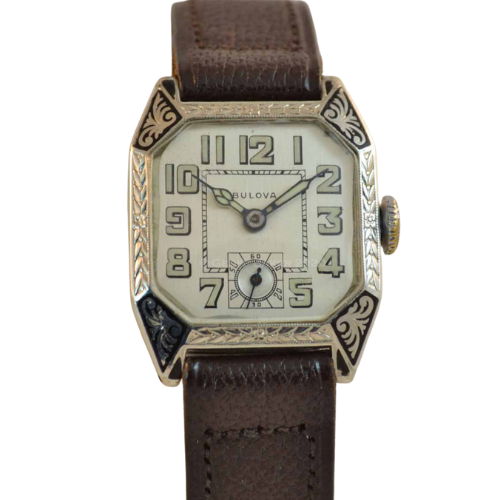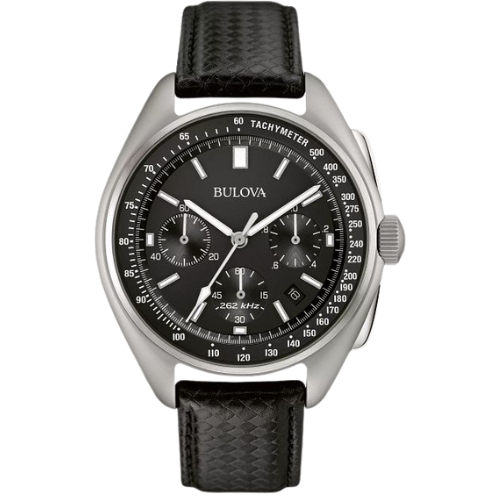10 Things About Bulova You (Probably) Didn't Know
1. An Immigrant
In New York City, a jeweler’s shop known as the J. Bulova Company was established, in 1875, by a Bohemian immigrant by the name of Joseph Bulova. The business was located on Maiden Lane, which is now a part of the Financial District. With Joseph’s background as a watchmaker and goldsmith, the shop decided to focus on producing high-quality pocket watches. However, Joseph Bulova observed that people were moving away from carrying pocket watches and instead wearing clocks on their wrists – by the time World War I had begun. Joseph was never one to be afraid of new ideas or different ways of doing things, so he was certain that wristwatches were the way of the future.
2. Quantity
The shop made a strategic change and started concentrating on developing high-quality wristwatches as its primary product. By 1919, Bulova had debuted their first comprehensive range of men’s wristwatches. Bulova was able to start producing watches in big quantities. This idea was very novel in the watch industry at the time, and it enabled Bulova to expand both the scope of his company and the number of watch lines that they offered.

3. The Lone Eagle
The ‘Lone Eagle’, made by Bulova, as a memento to commemorate Charles A. Lindbergh’s maiden flight over the Atlantic Ocean, without making any stops, was presented to Lindbergh, from Bulova, along with $1000 in prize money, on June 11th, 1927.
4. Joseph Bulova School of Watchmaking
The Joseph Bulova School of Watchmaking was established, in 1945, by Arde Bulova, Joseph’s son. The school first concentrated on teaching injured veterans who had served in World War 2 watchmaking skills, but it eventually developed into a full-fledged rehabilitation hospital. The institution was a supporter of and an advocate for persons with disabilities all around the globe.
5. Accutron
By the time the 1950s rolled around, Bulova had already established itself as a household brand, renowned for its wonderful timepieces, it’s backing of professional sports teams, and its successful advertising. (In 1926, Bulova created the very first advertising to be aired on the radio. In 1941, Bulova created the first television commercial, which was shown during a game between the Brooklyn Dodgers and the Philadelphia Phillies. The game took place in Brooklyn)
In 1960, the Accutron brand would launch and come to be associated with the company’s electric timepieces, which were made available to the general public. This innovative method used a tuning fork with a frequency of 360 hertz, which vibrated at a rate of 360 times per second, very much as vibrating quartz does today. The end product was a watch that was accurate to within two seconds each day, which was a significant improvement over the accuracy of any mechanical watch and is still outstanding by today’s standards.

6. Bulova In Space
In 1971, a Bulova timepiece was able to sneak a trip aboard Apollo 15. During Commander David Scott’s second walk on the moon, the crystal of his Omega Speedmaster came out of place. Scott opted to wear his backup watch, a Bulova 88510/01 chronograph , rather than go without a wristwatch so that he could keep track of the current time. His initial $500 investment fetched a recent price, for his watch, at $1.62 million USD, at auction. The watch shows significant wear from exposure while on the moon, and from splashdown and recovery.
7. Citizen
In 2008, Citizen purchased Bulova for a total of $250 million USD, putting an end to Bulova’s era as the pre-eminent watchmaker in the United States. The headquarters of Bulova are still located in New York City, however, the company’s watches are now manufactured in Japan, Hong Kong, and Switzerland. In 2010, Bulova went back to its ultra-precise ways by creating – The Precisionist. This brand-new watch has a quartz movement that operates at an extremely high frequency and is accurate to within ten seconds every year.
8. Diving
Bulova created specialist dive watches for those with a passion for deep sea exploration. With unidirectional rotating bezels the ‘Devil Diver’ highlights the first 15 minutes of dive – in a vivid color. Innovative models, like the Oceanographer, are geared towards those with a taste for sporty and robust watches.
9. Bulova Day
To commemorate Bulova’s 125th anniversary, New York City’s former Major Rudolph Giuliani declared October 4th, 2000, “Bulova Day.”
10. 24k Gold
In 2014, Bulova launched the Joseph Bulova collection with 24-karat gold timepieces. To configure the traditional weakness of 24k gold, the brand developed a way to forge solid 24k gold – typically too soft.

